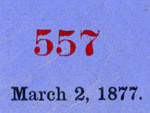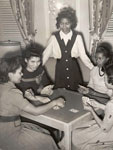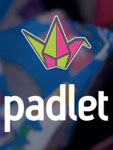Using Historical Ephemera in the Classroom

Historical ephemera include transitory materials from the past that were intended to have a one-time or temporary use. This guide offers suggestions for teaching with historical ephemera.
We can learn much from studying about the past using historical ephemera. Most of the ephemera that we have today were kept because they represent something significant to us. Personal ephemera, such as memorabilia, can provide an authentic entry point for students to learn about the past using evidence. Because ephemera are all around us, most children will have easy access to various types of ephemera, particularly mementos saved by family members. There are also many online collections of historical ephemera. The Ephemera Society of America maintains a list of ephemera topics.
This guide describes a series of activities that introduce students to the concept of ephemera and to methods for using historical ephemera as historical evidence. The first activity introduces students to ephemera by having them locate historical ephemera in their homes or from an online collection. The second activity uses a print broadside (one of the most popular forms of ephemera) declaring December 18, 1777 a national day of thanksgiving. The third activity is focused on the construction of ephemera and the notion that history can be the study of everyday activities.
- Make arrangements for supporting students who may not be able to find historical ephemera in their homes. These students can be provided with pre-selected materials from online collections such as this one.
- Students will need to access an online collection at the Library of Congress in Activity Two. If this is not possible, teachers should print the resources for use in the class.
- In the third activity, students will be constructing personal ephemera. This work may require art supplies.
Activity One: Learning from What's Lying Around—In this activity, students should locate a piece of historical ephemera in their homes. It is very common for people to keep ephemeral materials, although it's unlikely they would call it ephemera. Most people think of these items as personal memorabilia or mementos. They are physical items that remind us of past activities, events, or people. They might be photos, newspapers, magazines, ticket stubs, report cards, letters, postcards, or other items that evoke memories. The items selected by students should be somewhat removed from their experience, so as to open new opportunities to learn about the past. After students have located an item, they should respond to the following questions designed to support their analysis of the object and the context surrounding the object. The questions posed below are from an historical thinking heuristic developed by David Hicks, Peter Doolittle, and Tom Ewing called SCIM-C. For more about this historical thinking model see here. The first step is to summarize the content of the item. Have students answer these four questions to support their summary level understanding:
- What type of historical document is the source?
- What specific information, details, and/or perspectives does the source provide?
- What is the subject and/or purpose of the source?
- Who was the author and/or audience of the source?
The second step is to contextualize the item in historical time and space. Have students respond to these four questions to support the process of contextualizing:
- When and where was the source produced?
- Why was the source produced?
- What was happening within the immediate and broader context at the time the source was produced?
- What summarizing information can place the source in time and place?
Extend the activity by having students digitize their historical ephemera. Make the process simple by having students take pictures of the item and then post one to Flickr.com or some other photo sharing website. Once the item has been digitized and posted, it can be embedded in additional work aimed at producing an historical interpretation. See an example of a personal memento that I digitized here. This is a report card from my grandmother issued in May 1917.
Activity Two: Posting the News—Print broadsides are perhaps the most popular form of historical ephemera. Broadsides were a very common form of communicating news-related information in the 17th and 18th centuries, and can still be found in public spaces, although today they tend to be more focused on advertising and the announcement of events. The typical broadside is an oversized single page communicating some information. Broadsides are posted in public spaces as a means to quickly and publically distribute important information. They are meant to be posted temporarily, lasting until the next rain, or when it is replaced with another posting, or even thrown away. In this activity, students will access a broadside from 1777 that announced a November 1, 1777 proclamation from the Second Continental Congress "recommending" December 18, 1777 as a national day of thanksgiving. Students can access a digital version of the broadside from the Library of Congress's American Memory collection titled "An American Time Capsule: Three Centuries of Broadsides and Other Printed Ephemera." The actual digital broadside is located here. Students should answer the same set of SCIM-C summarize and contextualize questions posed above for this broadside. To extend students' historical thinking, have them also make inferences from the documents. Inferring is the third stage in the SCIM-C model. In this case, the inferences should emerge from specific questions that students have developed as they summarize and contextualize. To support students as they make their inferences, use these questions from Hicks, Doolittle, and Ewing:
- What is suggested by the source?
- What interpretations may be drawn from the source?
- What perspectives or points of view are indicated in the source?
- What inferences may be drawn from absences or omissions in the source?
The online presentation of the 1777 thanksgiving recommendation includes a newspaper article with summary and contextual information, but students may have to do some additional research to answer the SCIM-C questions. Activity Three: Creating Ephemera—To extend their understanding of how historical ephemera can be useful in studying the past, have students create their own ephemera to represent some historic event, idea, or person. Follow these guidelines when making the ephemera:
- Use technologies that represent the period of the ephemera. For example, computer software should not be used to make any item meant to represent an event, idea, or person prior to 1990.
- Use historically accurate language.
- Make use of common ephemera forms, such as broadsides, postcards, letters, etc.
For more on how we can use historical ephemera in the class or to access collections of historical ephemera please see these resources.
Organizations and Websites:
- The Ephemera Society of America
- The Ephemera Society of the United Kingdom
- The Ephemera Network
- Ephemera blogs—See here and here
- Historical Ephemera
Books:
- Hudson, Graham Spence. The Design and Printing of Ephemera in Britain and America, 1720-1920.
- Rickards, Maurice and Michael Twyman. The Encyclopedia of Ephemera: A Guide to the Fragmentary Documents of Everyday Life for the Collector, Curator, and Historian.
Collections and Online Ephemera:
- Digital resources from the American Antiquarian Society
- Library of Congress's American Memory collection "An American Time Capsule: Three Centuries of Broadsides and Other Printed Ephemera"
Acknowledgements:
A special thanks to David Hicks at Virginia Tech for his creative contributions to the field of historical thinking, most importantly the SCIM-C method.






